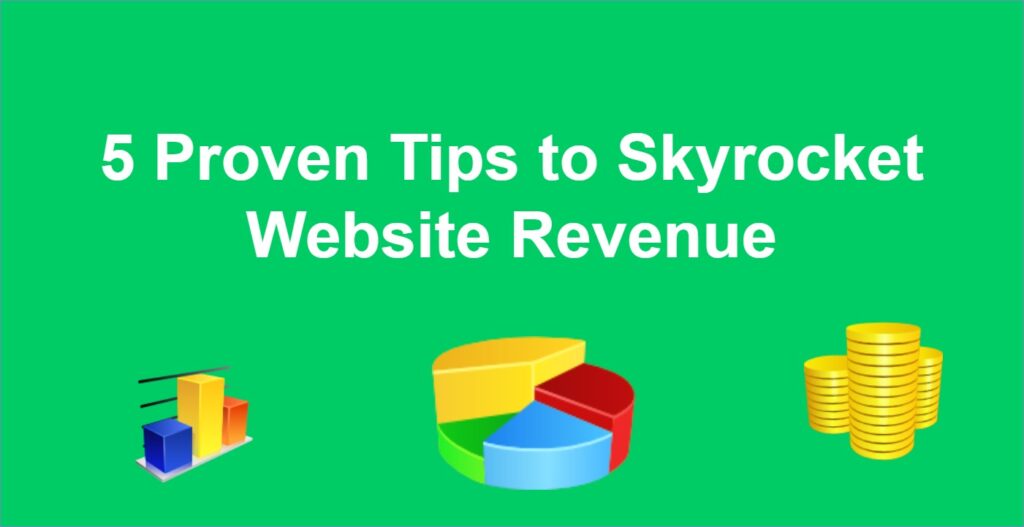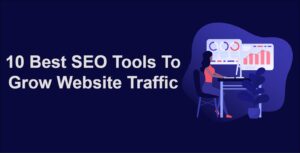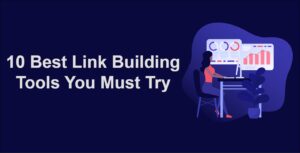Running a successful online business requires more than just attracting a high volume of traffic to your website. Maximizing website revenue is a delicate balance of optimizing existing resources, improving user experience, and implementing revenue-generating strategies. In this comprehensive guide, we will explore five proven tips to increase your website revenue without solely relying on traffic growth. By implementing these strategies, you can unlock the full potential of your website revenue growth.
Tip 1: Optimize Conversion Funnel
Optimizing the conversion funnel is crucial for improving website revenue. The conversion funnel represents the steps a user takes from initial interaction with your website to completing a desired action, such as making a purchase or signing up for a service. Here are some strategies to optimize the conversion funnel:
Understand Your Audience: Conduct thorough research to understand your target audience, their needs, preferences, and pain points. Create buyer personas to help tailor your website content and user experience to their specific interests.
Streamline User Experience (UX): Ensure your website is user-friendly, intuitive, and easy to navigate. Optimize loading times, simplify the checkout process, and reduce friction at each step of the funnel to prevent users from dropping off.
Clear Call-to-Actions (CTAs): Use compelling and visible CTAs throughout your website. Make them stand out with contrasting colors, and use persuasive language to encourage visitors to take action.
Mobile Optimization: More and more users access websites through mobile devices. Ensure your website is fully responsive and provides a seamless experience across various screen sizes and devices.
A/B Testing: Use A/B testing to compare different variations of your website, CTAs, landing pages, and other elements. Analyze the results to identify which versions perform better and implement the changes accordingly.
Landing Page Optimization: If you run specific marketing campaigns, ensure that the landing pages are relevant to the ad or link that brought users there. Optimize these pages to maintain consistency and deliver a clear message that aligns with the user’s intent.
Personalization: Utilize data and user behavior to personalize the website experience. This could include showing personalized product recommendations, relevant content, or tailored offers based on user preferences.
Build Trust: Establish trust with your audience by displaying security badges, customer reviews, and testimonials. Offer transparent pricing and clear return policies to alleviate any concerns users may have.
Exit-Intent Popups: Implement exit-intent popups to try to retain users who are about to leave the website. Offer them a last-minute incentive, such as a discount or free resource, to encourage them to stay or return later.
Track and Analyze Data: Use analytics tools to track user behavior and identify drop-off points in the funnel. Analyze the data regularly to gain insights and make data-driven decisions for continuous improvement.
Remarketing and Retargeting: Implement remarketing campaigns to reach users who have previously interacted with your website. Remind them about your products or services through targeted ads to encourage them to complete their actions.
Customer Support and Communication: Provide excellent customer support and ensure communication channels are easily accessible. Address inquiries promptly and effectively, as this can significantly impact user trust and willingness to convert.
Remember that continuous optimization is essential. Regularly reassess your conversion funnel, test new strategies, and adapt to changes in user behavior and market trends to improve website revenue over time.
A well-optimized conversion funnel is the backbone of a revenue-generating website. Your sales funnel is the journey that visitors take from landing on your website to making a purchase. To increase revenue, you must identify potential drop-off points and areas that need improvement in your funnel.
Tip 2: Personalize User Experience
In today’s digital age, customers expect relevant and tailored experiences that cater to their individual preferences. Personalization goes beyond using a visitor’s first name in an email; it involves using customer data and user behavior to create a unique and meaningful experience.
How Personalize Experience Impacts Website revenue?
Increased Engagement: Personalized content resonates better with users, leading to higher engagement levels. This can result in users spending more time on your website, exploring more pages, and being more likely to return in the future.
Higher Conversion Rates: Personalized product recommendations, tailored offers, and content based on user preferences can lead to higher conversion rates as users are more likely to find items or information that align with their interests and needs.
Improved Customer Loyalty: When customers feel valued and understood, they are more likely to become loyal to your brand, leading to repeat purchases and potentially becoming advocates who refer others to your website.
Reduced Cart Abandonment: Personalized offers and reminders can help reduce cart abandonment rates by encouraging users to complete their purchases or return to complete them later.
Personalizing the user experience can have a significant impact on website revenue. When users feel that a website understands their preferences, needs, and interests, they are more likely to engage with the content, spend more time on the site, and ultimately convert into paying customers. Here’s how personalization can positively affect revenue and some tips to improve personalized experiences:
Tips to Improve Personalized Experience:
Data Collection and Segmentation: Collect relevant data about your users, such as browsing behavior, purchase history, location, and preferences. Segment your audience based on this data to deliver targeted content and offers.
Recommendation Engines: Implement recommendation engines that analyze user behavior and offer personalized product or content suggestions. These can be based on previous purchases, browsing history, or similarities with other users.
Dynamic Content: Use dynamic content blocks that adapt based on user data. For example, you can display personalized greetings, recommendations, or offers based on the user’s location or browsing history.
Personalized Emails: Utilize personalized email marketing campaigns that address the recipient by name and offer tailored content and promotions based on their interests and behavior.
Behavioral Triggers: Set up behavioral triggers to respond to specific user actions. For instance, send a follow-up email with relevant content or offers after a user completes a specific action on your website.
User Account Customization: Allow users to create accounts and personalize their profiles. This can include preferences, saved items, and past purchase history, making their experience more relevant and convenient.
Location-Based Personalization: Use geolocation data to provide location-based recommendations, offers, and information that are relevant to the user’s region.
Social Proof and Recommendations: Display customer reviews, ratings, and testimonials to build trust and show that other users with similar interests have had positive experiences.
Personalized Landing Pages: Create personalized landing pages for different segments of your audience, aligning the content with the specific ad or campaign that brought them to your website.
Consistent Omni-Channel Experience: Ensure personalization extends across all channels, including the website, mobile app, social media, and email, to provide a seamless and cohesive experience.
Remember to respect user privacy and obtain explicit consent for data collection and personalization. Use data ethically and responsibly to build trust with your audience and create a genuinely valuable personalized experience that drives website revenue.
Tip 3: Implement Upselling and Cross-Selling
Upselling and cross-selling can play a significant role in increasing website revenue by maximizing the value of each customer’s purchase and encouraging repeat business. Here’s how these techniques can be applied in the context of a website to boost revenue:
Upselling on the Website: When customers are browsing products on your website, you can implement upselling strategies to offer them more expensive or upgraded options. Here’s how:
Product Pages: Display the upgraded or premium versions of the products prominently with clear benefits and additional features. Use persuasive copy and visuals to showcase the added value of these options.
Bundling: Offer product bundles that combine the main product with relevant accessories or complementary items. Offer a discounted price for the bundle, making it an attractive option for customers.
Product Comparisons: Provide comparison tables between different product versions, highlighting the advantages of the higher-priced options.
Personalized Recommendations: Use data from the customer’s previous purchases or browsing history to offer personalized upsell suggestions that align with their preferences.
Cross-Selling on the Website: Cross-selling on the website involves suggesting related or complementary products to customers during their browsing or checkout process. Here’s how to do it effectively:
Related Products: Display related products on the product pages or in a “You May Also Like” section. These suggestions should complement the main product and enhance the overall experience.
Frequently Bought Together: On the product page or during the checkout process, showcase items frequently bought together with the main product to encourage customers to add them to their cart.
Customer Recommendations: Implement customer review sections that include suggestions for other products or accessories that customers found useful or enjoyable alongside the main purchase.
Post-Purchase Opportunities: Don’t miss out on the opportunity to continue upselling and cross-selling after a successful purchase:
Confirmation Page: On the order confirmation page, recommend additional products or services that complement the customer’s purchase and offer a special discount for immediate upsells.
Follow-up Emails: Send personalized follow-up emails after a purchase, thanking the customer and offering exclusive deals on related products or complementary services.
Loyalty Programs and Incentives: Implement loyalty programs that reward customers for repeat purchases. Offer discounts, freebies, or early access to new products as incentives for customers to return and explore upsell and cross-sell opportunities.
By strategically incorporating upselling and cross-selling techniques on your website, you can increase the average order value, boost customer satisfaction, and ultimately drive more revenue for your business. However, remember that the key is to provide genuine value and relevance to the customers’ needs, rather than being pushy or intrusive. A positive customer experience will encourage loyalty and repeat business, contributing to sustained revenue growth over time.
Tip 4: Optimize Pricing Strategies
Strategic pricing can make a significant difference in your website revenue. Price optimization involves finding the right balance between attracting customers and maximizing profits.
Dynamic Pricing: Experiment with dynamic pricing by offering discounts during slow periods or using scarcity tactics to encourage immediate purchases. Scarcity tactics create a sense of urgency, such as “Limited Time Offer” or “Only 3 Items Left in Stock.”
Tiered Pricing and Bundled Packages: Consider offering tiered pricing options, subscription models, or bundled packages to entice customers with more attractive offers. For instance, a tiered pricing model for software may include a basic, standard, and premium plan, each with increasing features and benefits.
Data-Driven Decisions: Monitor competitors’ prices and conduct regular surveys to understand how your target audience perceives your pricing. Customers are often willing to pay more for products or services that provide additional value or unique benefits.
Tip 5: Focus on Customer Retention
While attracting new customers is essential, customer retention is equally crucial for long-term revenue growth. Acquiring new customers can be more expensive than retaining existing ones, making customer loyalty a valuable asset.
Loyalty Programs: Implement loyalty programs and reward systems to incentivize repeat purchases and encourage brand loyalty. Loyalty programs can be as simple as offering points for every purchase that customers can redeem for discounts or exclusive rewards.
Personalized Email Marketing: Utilize email marketing to stay connected with your existing customers and provide them with exclusive offers and updates. Sending personalized emails with tailored offers can re-engage customers and encourage repeat purchases.
Exceptional Customer Service: Focus on providing exceptional customer service to build strong relationships with your customers. Satisfied customers are more likely to recommend your business to others, leading to organic growth through word-of-mouth marketing.
Increasing website revenue doesn’t always require a massive influx of traffic. By focusing on optimizing conversion funnels, personalizing user experiences, and implementing revenue-boosting strategies, you can maximize the potential of your existing traffic and achieve substantial revenue growth. Embrace the power of upselling and cross-selling, experiment with pricing strategies, and prioritize customer retention. By adopting these proven tips, your website revenue will soar to new heights, and your online business will thrive, independent of traffic fluctuations.
Remember, growing your website revenue is an ongoing process. Continuously monitor the performance of your strategies, adapt to customer preferences, and strive for continuous improvement. With dedication and innovation, you can transform your website into a revenue-generating powerhouse in the competitive digital landscape.





